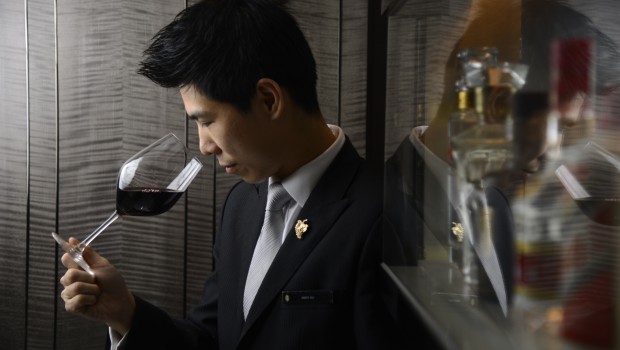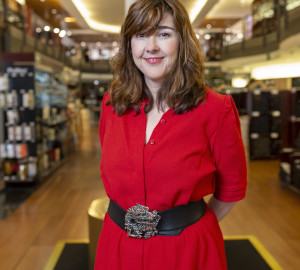Over the more than 8,000 years of wine history, it seems logical to think that a huge number of linguistic terms have been generated all over the world. Otherwise, it would be impossible to name the infinite elements and nuances that make up the vast universe that man has created around this foodstuff. This wealth of terms can even be overwhelming for those who approach the world of wine for the first time. But in order to demystify this supposed elitism that this field might once have presented, there is nothing better than to familiarise oneself, little by little, with some of these terms related to the world of wine. In this way, we will be able to better understand the beauty of these two living and constantly evolving elements: wine and language. Because enjoying learning and expanding our vocabulary can also be enjoying the Wine Culture. We will start with the following 35 concepts.
Approached
Also embocado. It refers to white wines, usually dry, which have a certain sweet connotation, due to the presence of residual sugars in a natural way. This sweetness balances its acidity. This characteristic is found in wines with between 5 and 15 grams of sugar per litre.
Needle
Sparkling wine. This is a wine in which a carbonic gas content can be appreciated, both through the sight, in the form of bubbles that slowly rise to the surface, and through the sensation they produce in the mouth, but without forming foam. This carbon dioxide gas is formed naturally as a product of fermentation.
Add
The year in which the grapes from which a particular wine was produced were harvested.
Astringent
Characteristic of a wine that produces a sensation of roughness in the mouth, mainly due to an abundant presence of tannins.
Bouquet
French term that refers to the tertiary aroma that can be found in wines with a certain crianza and that develops during the time in bottle. This bouquet can be of oxidation (mainly in sweet wines aged in the presence of oxygen) or of reduction (when this aroma develops in anoxygenic atmospheres).
Brut
Classification indicating the sugar content of a sparkling wine with less than 15 grams per litre.
Carbonic
Refers to the gas (carbon dioxide or carbon dioxide) that originates as a product during alcoholic fermentation. The presence of this gas gives the wine a certain freshness.
Chateau
French term referring to a wine estate where the vineyards and cellars are part of the same property.
Claret
Pale rosé wine that takes its colour from the significant amount of white grapes used in its production in combination with red varieties. This type of wine is traditionally found in Rioja and in some areas of Castilla y León. Related to this term, "Claret" is the name given to those red wines with little colour. They were common wines at the beginning and middle of the 20th century and the word "Claret" appeared prominently on their labelling, for example, "Rioja Claret".
Crown
In sparkling wines, the row of bubbles that forms on the surface in contact with the contour of the glass is called a crown.
Coupage
Process in which different wines and varieties from the same or different vintages are blended. This is done in order to either unify the characteristics of the different batches or to complement the characteristics of the different wines.
Maturation
The process of maturation and ageing of a wine during which it develops its particular characteristics. In red wines, it is normal for part of the crianza process to take place in the barrel, and part in the bottle.
Body
Refers to the sensation of consistency of a wine in the mouth. It is a highly appreciated characteristic that depends on factors such as the alcohol content of the wine or the dry extract. A full-bodied wine should give a mouth-filling sensation.
Structured
A wine is said to have a good organisation of sensations in the mouth, i.e. when it has a good balance between flavour, acidity, body, etc.
Developments
Modifications that occur in wine as a result of the passage of time. They can be good, improving the wine; or bad, worsening it.
Alcoholic fermentation
This is the fundamental process from which must is transformed into wine. During this process, the sugar in the must is transformed into alcohol by the metabolic action of different yeasts, producing carbon dioxide gas as a by-product of fermentation.
Malolactic fermentation
Second fermentation through which the malic acid present in the wine is transformed into lactic acid by the action of different bacteria. This process brings smoothness to the red wine.
End of mouth
Last sensations that remain in the mouth after tasting a wine.
Generous
Wines that produce a sweet to alcoholic mouthfeel, traditionally produced in the Spanish regions of Jerez, Condado de Huelva, Sanlúcar de Barrameda and Montilla-Moriles. They are wines that have an addition of alcohol during their production.
Hollejo
Grape skin. Also called pomace or casca.
Tear
The first must extracted from the grapes by the mere action of gravity, without the need to subject the bunches to any mechanical processing, is known as 'lágrima' (tear). It is a must of exceptional quality.
Tears
The trail left by the drops that run down the wall of the glass and which become particularly visible after shaking the wine in the glass. The persistence of the tears will depend mainly on the alcohol and glycerine content of the wine.
Lees
During the winemaking process, these are all the solid remains that accumulate at the bottom of the tanks after fermentation. They are mainly composed of waste produced by the metabolism of yeasts.
Persistence
It refers to the duration of the sensations that a wine leaves in the mouth after tasting.
Aftertaste
All the sensations that a wine leaves after being drunk.
Retronasal
Aromas that we perceive when the wine is still in the mouth and after swallowing. It is due to the effect that wine has on our sense of smell when its volatile particles reach the nostrils through the larynx.
Ribbing
This is the name given to the rim that the wine forms when it comes into contact with the glass. At this point, the colour of the wine is lighter.
Semi-sweet
Classification of wines with a sugar concentration of between 30 and 50 grams per litre.
Semi-dry
Classification of wines with a sugar concentration of between 15 and 30 grams per litre.
Solera
This refers to the last phase of crianza of fortified wines. In the crianza of this type of wine, the criaderas and soleras ageing system is used. In this system, the casks (500-litre barrels made of American oak) are usually stacked at different heights. Part of the wine from the upper casks is periodically removed to fill the barrels on the lower level. This is repeated from one level to the next until the lowest level of casks, known as the solera, is reached, due to its proximity to the ground.
Sulphites
These are sulphur salts that can be found naturally or added to wine. They have preservative and antioxidant effects on the wine and also help to clean its colour.
Tannins
These are polyphenols that give the wine bitterness and astringency. Tannins are mainly found in red wines, coming from certain parts of the vine (skins, pips, branches, leaves, etc.), or from the wood used to build the barrels in which the wine is stored crianza .
Terroir
A landscape unit with its own characteristics (climate, vineyard orientation and soil type) which are reflected in the wines produced from the grapes grown there.
Varietal
A varietal is a wine made from a single grape variety.
Virgin
Wine-making process, widely used in the production of white and rosé wines, in which fermentation takes place without contact between the must and the grape skins.
These are just a few terms related to the world of wine. They are not the only ones, but they are a good starting point from which to begin to expand our wine vocabulary and learn a little more about this exciting beverage.
And you, what other interesting wine-related terms do you know?
Cover photo author: InterContinental Hong Kong


















I had understood that nowadays rosés are made that are not obtained by blending grapes or wines, but by the shorter contact time with the grape skins. How can I tell that I am buying a rosé and not a claret? Thank you
Hello Angels!
Clarets are still made. The main difference with rosé is that claret is made with white grapes and a small quantity of red grapes, while rosé is made only with red grapes, using the bleeding technique. This technique consists of separating part of the red wine that is in the tank before it begins to mature in order to aid greater concentration, while the amount resulting from this separation is used to make rosé wine.
Soon we will continue with the "wine dictionary" series, in which we will talk about this concept along with many others.
We invite you to try our Rosé Vivanco Tempranillo Garnacha: http://vivancoculturadevino.es/es/bodega/los-vinos/tempranillo-garnacha/
Greetings!